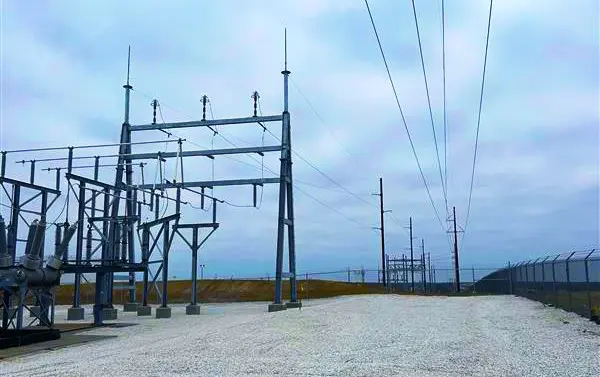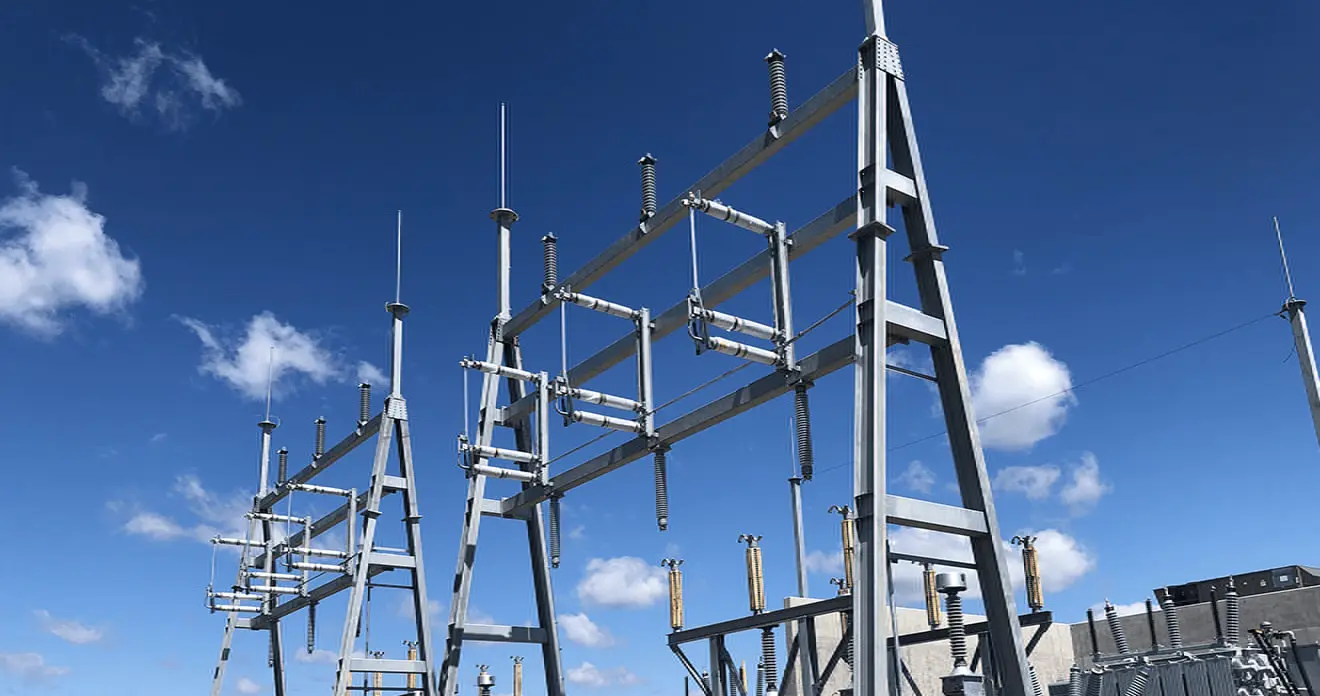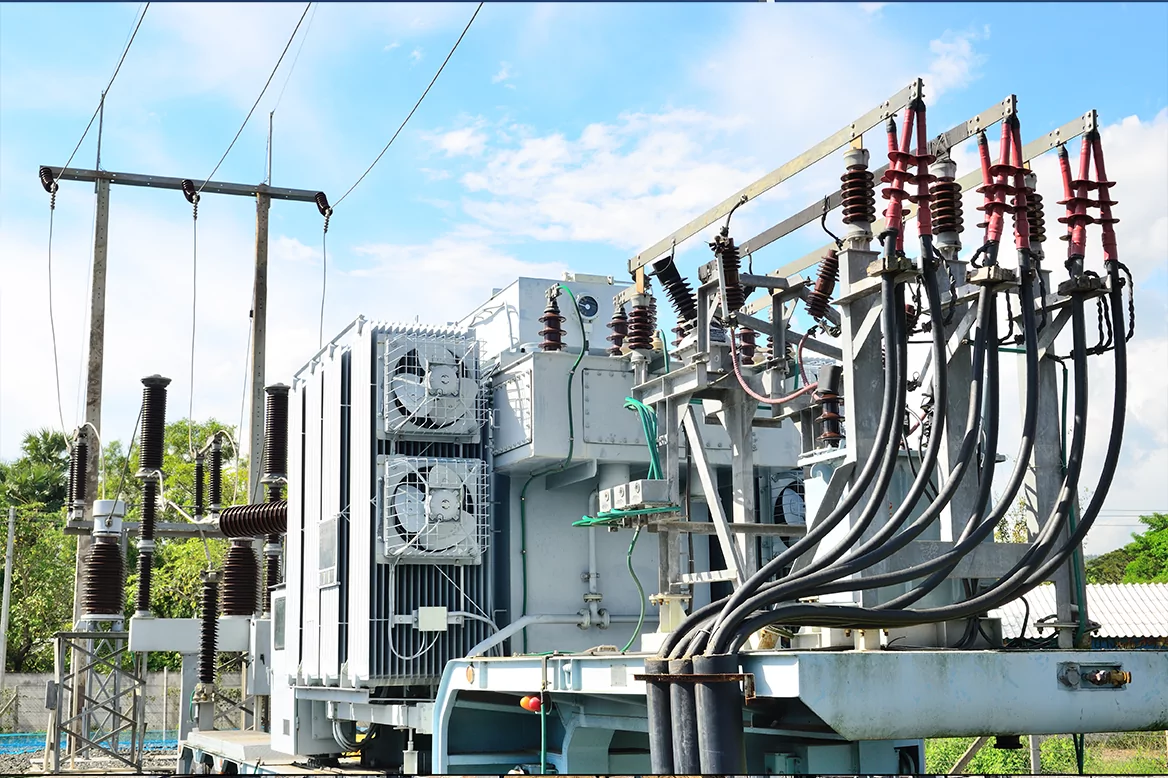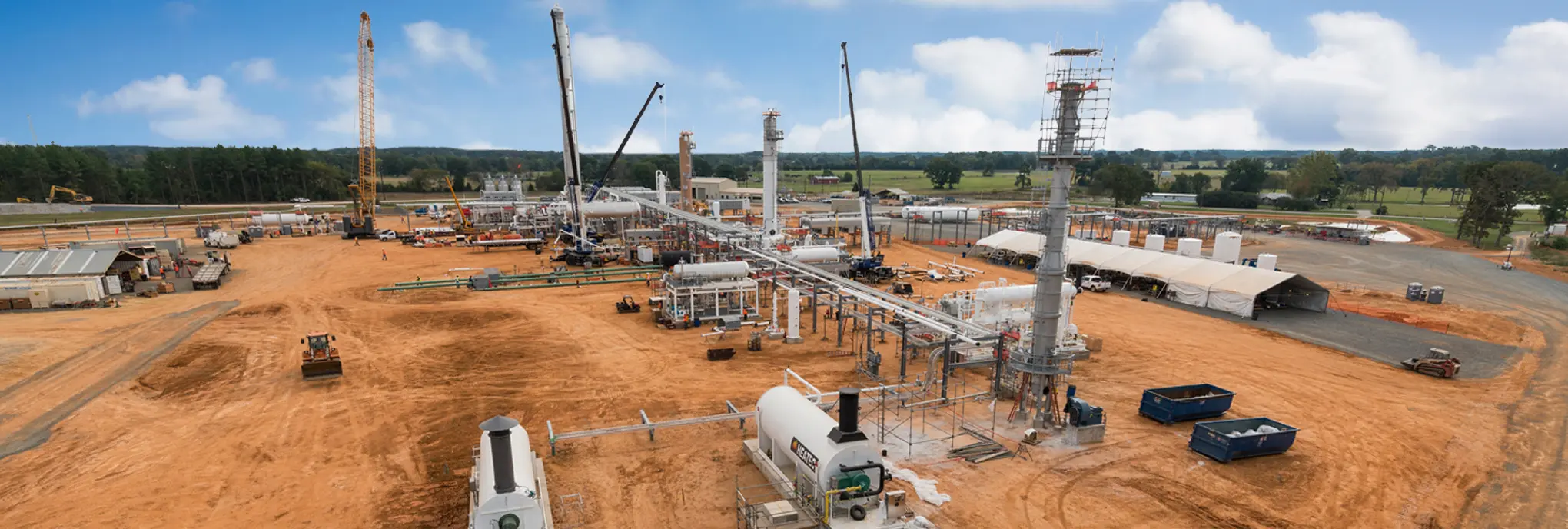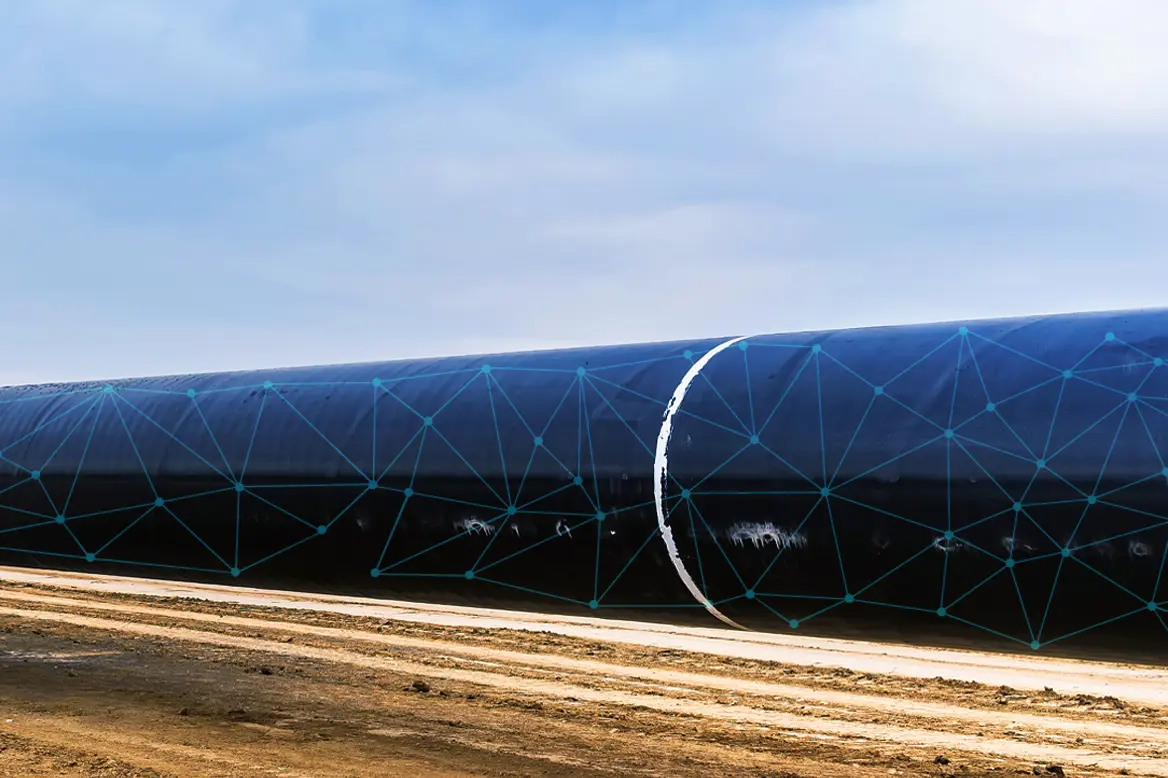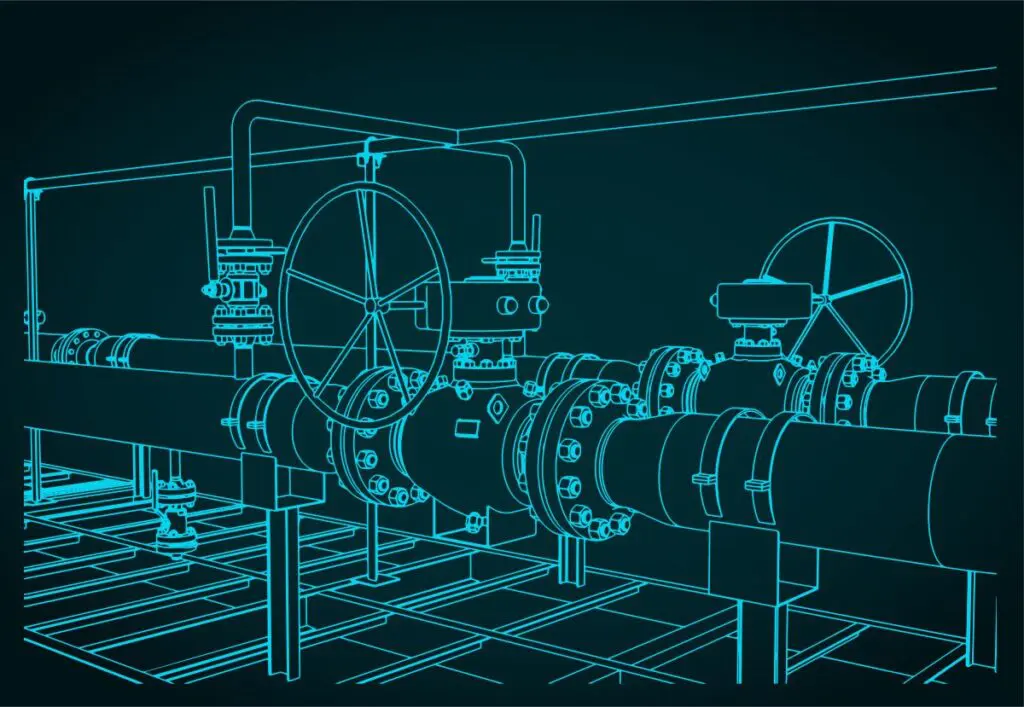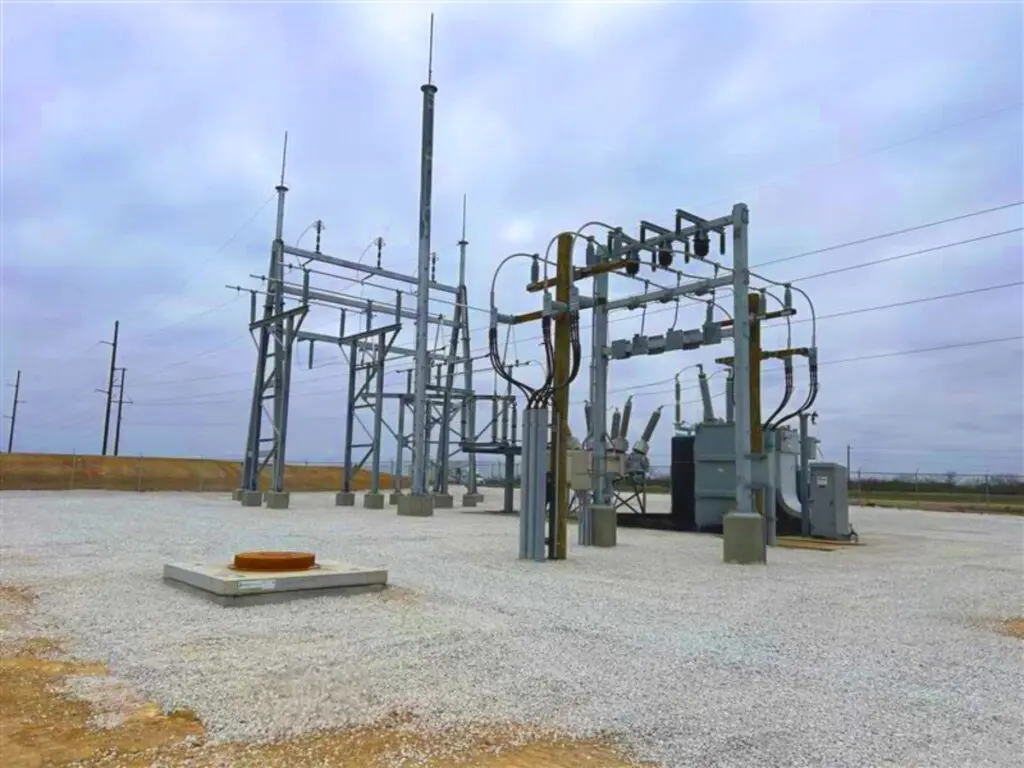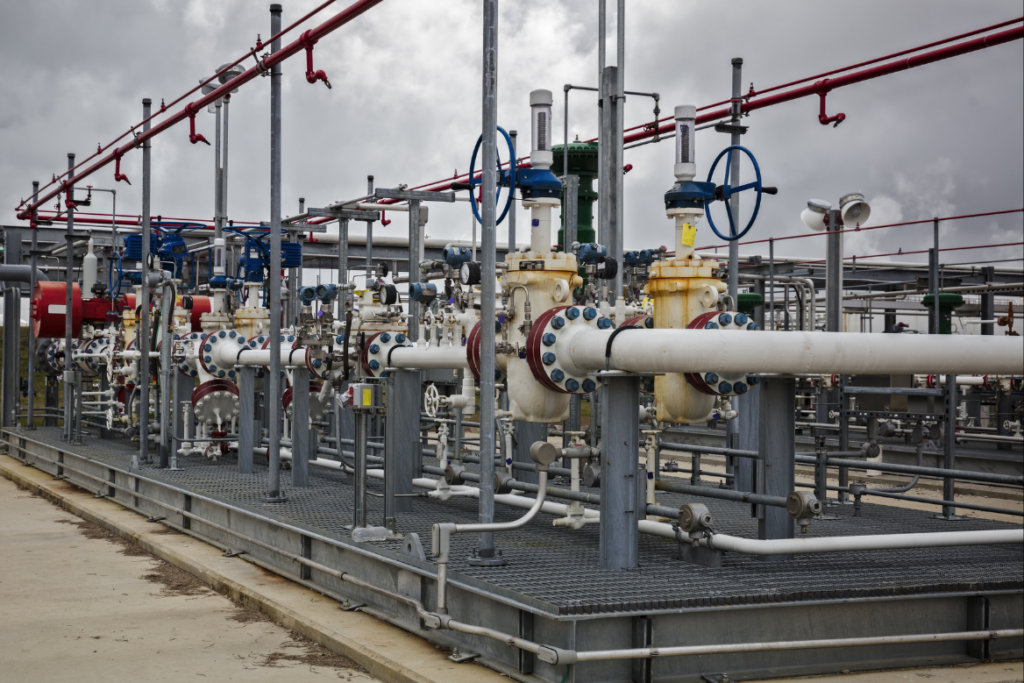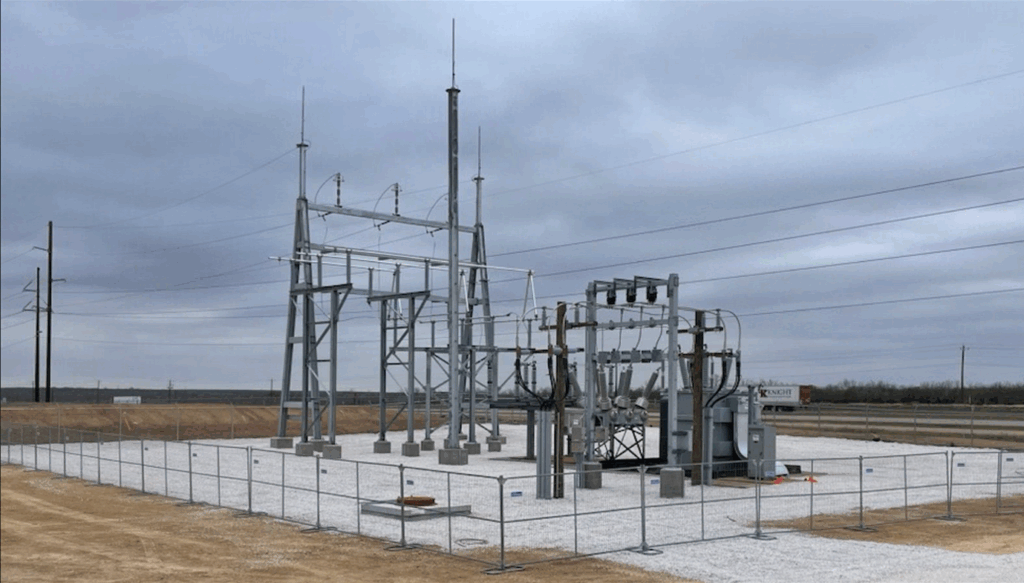

Want to share this article?
High-Voltage, High-Velocity
Scott Salter, Director of Power and Utilities, Audubon Co., comments on how the firm energised an NGL hub in only five months with an agile, full-scale EPC solutions
[Originally published in World Pipelines August 2025 issue]
Faced with an unexpected loss of planned power supply and a tight energisation deadline at its new pumping station in South Texas, a natural gas infrastructure company turned to Audubon Co. for a full-scale engineering, procurement, and construction (EPC) solution. The greenfield project, executed in two distinct phases, turned the power on for pumping natural gas liquids (NGLs) within five months. The company delivered a 138 kV/4160 V, 7.5 MVA mobile substation; 1200 ft, 138 kV transmission line; and temporary-to-permanent transition strategy while navigating complex stakeholder negotiations and overcoming lead time challenges.
Gap in the grid: seeking an alternative power source
In mid-2024, as a natural gas infrastructure owner advanced construction on its newest pumping station in South Texas along a cross-regional pipeline, a major gap emerged – the expected 4160 V service from a neighbouring site was no longer viable. With a March 2025 energisation deadline looming, the asset faced a make-or-break moment. Reliable high-voltage power was essential to begin pumping y-grade NGLs through this vital leg of the pipeline system.
“NGL startup wasn’t scheduled for another nine months, but suddenly the pumping station was without a plan for power,” said Scott Salter.
“This kind of gap creates serious downstream risk, not just for the project schedule, but for commissioning and operations all the way to product delivery to the consumer. Situations like this are becoming more common as grid stress increases and utilities face tighter resource constraints. We’re seeing more operators needing self-contained, fast-track power solutions, and it’s changing how we think about project execution. You can’t just wait for a utility window anymore. You have to engineer around the delay.”
The midstream firm reached out to EPC service provider Audubon, seeking urgent support after its power plan in South Texas fell through. Recognising the time-sensitive nature of the request and the critical role of power in keeping pipeline construction on track, mobilisation was quick. What began as a series of fast-paced consultations and technical reviews evolved into a full-scale solution. The EPC contract was formally awarded in August 2024 – with concept work, stakeholder engagement, and material strategy already underway in parallel to meet the aggressive schedule. In September 2024, engineering and design kicked off, officially starting the clock on the project timeline.
Power sequence: prioritising energisation in phases
Audubon planned a tight, focused strategy to keep the project on schedule, key to which was a temporary, mobile substation. Electrical infrastructure carries long lead times, especially substation elements. Even if a substation was designed overnight, its equipment would still not arrive by March 2025. So, the team pivoted – and engineered the site’s permanent substation around a modular substation that would be rented as an interim power solution.
“The only way to meet the deadline was to split the workstreams,” remarked Salter.
“Speed was the overarching goal, but it was really about smart strategy. The temporary substation wasn’t a stopgap – it was a
launchpad. We intentionally designed it to carry forward into the permanent configuration so that every piece of work counted toward the long-term solution. That’s how we stayed ahead of the schedule without sacrificing quality.”
Unlike a conventional mobile substation, the temporary system needed to support a future cutover to permanent infrastructure. That meant more than powering up; it meant planning ahead. Audubon engineers integrated permanent A-frame and high/low bus structure into the temporary layout, allowing for a smooth switchover to permanent in phase two. Temporary equipment included the transformer, 138 kV breaker, and disconnect switch.
Behind the scenes, the procurement team expedited materials for the temporary substation and orchestrated long-lead packages for the permanent substation. By
issuing early packages and pre-qualifying vendors, the supply chain was kept aligned with the project’s needs, despite volatility in material availability across the power
market.
Audubon Project Manager Jules Marks commented: “The quick design-build on this project meant a lot had to happen at the same time. Every procurement decision had to map back to field placement, constructability, and project sequence. There was no room for handoffs or delays, either. We were constantly aligning materials, vendors, and field crews with evolving design realities. It wasn’t just fast-track; it was full immersion at every step.”
Balancing act: negotiating transmission line placement
Transmission line design also began in September 2024, with what looked like a straight path for placement. The site’s western border already had existing pole infrastructure, as well as a parallel neighbouring power line that set the routing precedent. Routing proved to be another unexpected challenge, however. Requirements from adjacent landowners competed, resulting in a very narrow corridor to fit the transmission line.
“The routing demands did threaten the schedule at that point,” Salter noted.
We dug in with the design, though, and worked with all the stakeholders to better understand their concerns and expectations. We backed the routing revisions with hard data to meet all safety and clearance standards.”
Audubon’s reputation for collaboration and flexibility was put to the test – and held up. Thanks to skilled cooperation and strategic design, the 1200 ft, 138 kV transmission line was successfully routed through a narrow, 40 ft wide corridor adjacent to utility-owned and private midstream property. And rather than starting from scratch, the site’s previously abandoned transmission poles were utilised and retrofitted to meet current design standards. After full inspection, structural integrity verification, and modification, construction proceeded without the time or cost associated with new fabrication and delivery. It was a resourceful solution that balanced safety, schedule, and cost.
By the end of December 2024, the transmission line was fully installed – despite the route negotiations that nearly stalled the project. The midstream asset’s startup
schedule remained intact, underscoring the value of practical problem-solving in a high-stakes environment.
Meter pressure: problem-solving at the 11th hour
Even with engineering, procurement, and field execution aligned, the project encountered another challenge that nearly derailed the schedule for energisation and startup
– this time over a single component: the energy meter. From the beginning of the South Texas pumping station project, the site’s 5 kV power meter was committed
by the regional utility provider. This detail often goes unnoticed in a typical power project schedule, but when several parts for the meter became unavailable in the fall of 2024, it became a huge problem. For Audubon, the challenge became almost iconic – a marker of the larger project’s importance and the team’s ingenuity in execution.
Marks reflected on the moment they learned the meter would be delayed: “Without a meter the station wouldn’t have power. So, at that point the whole team was all in, from Pittsburgh to New Orleans. There wasn’t time or use for finger-pointing, just rolling up our sleeves. We were going to do whatever it took.”
Even with engineering, procurement, and field execution aligned, the project encountered another challenge that nearly derailed the schedule for energisation and startup
– this time over a single component: the energy meter. From the beginning of the South Texas pumping station project, the site’s 5 kV power meter was committed
by the regional utility provider. This detail often goes unnoticed in a typical power project schedule, but when several parts for the meter became unavailable in the fall of 2024, it became a huge problem. For Audubon, the challenge became almost iconic – a marker of the larger project’s importance and the team’s ingenuity in execution.
Understanding the meter as nonnegotiable, the power group took over its scope and re-engineered it to use available current transformers (CTs) and potential transformers (PTs) without sacrificing quality, compliance, or performance. The solution shipped and installed in early 2025 and was successfully field-inspected and -tested by the utility company.
This adaptive, cross-functional, hands-on approach showed itself repeatedly. Whether negotiating clearances, configuring design for two different phases of energisation, or building equipment outside of scope, the EPC team constantly responded to changing conditions with superior technical performance.
EPC agility for the win: meeting the timeline and exceeding expectations
Construction began on the site’s high-voltage substation on 1 January 2025 – four months after project kickoff. Substation installation wrapped up in late February –
tested, inspected, and cleared – five months after project kickoff. By the time commissioning was done, power was set and ready for pumping operation. Site energisation
happened at the six month mark, with NGL pump startup quickly following two weeks after that.
With the pumping station energised and operating, the Audubon power group has shifted focus to phase two: EPC on the 138 kV/4160 V permanent substation alongside
engineering, fabrication, and installation of the site’s relay panels and power distribution centre (PDC) building. The team’s efforts on the temporary substation went beyond filling a power gap; they built momentum – the permanent substation is scheduled for cutover in early 2026. Thanks to the foresight in the original design and sequencing, the foundational steel, grounding, and bus configuration are already in place. Though complex, the transition is expected to occur with minimal service interruption.
What began as a fast-track challenge with fractured plans became a model for adaptive EPC execution. The delivery for the natural gas client in South Texas showcases what’s possible when engineering precision and project dedication meet execution urgency for critical energy supply. With a compressed schedule, multiparty
constraints, and unpredictable obstacles jeopardising success, technical fluency, stakeholder collaboration, and creative problem-solving were exhibited.
“Projects like this don’t happen accidentally,” said John Pierce, Senior Vice President of Manufacturing and Infrastructure for Audubon.
“They happen because talented people make fast, wise decisions based on experience. They own the challenges and refuse to let
momentum stall. We are incredibly proud of our work on this project. With reliable power, our client will surely bring critical energy resources to end users for the long term.”
For the midstream infrastructure company, the pumping station now stands as a key asset in the broader expansion of its natural gas portfolio. It is an example of how
integrated, dedicated EPC services can deliver certainty – especially when the power has to be on.
See this story in the full August 2025 issue of World Pipelines.


